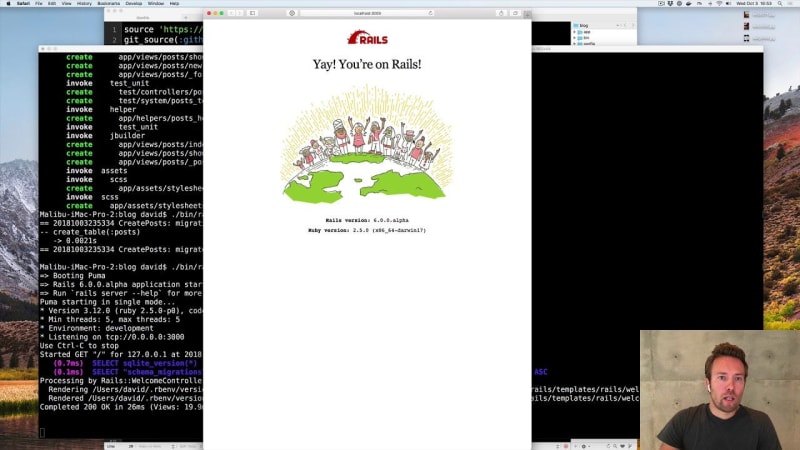
Vinicius Brasil
Posted on January 1, 2019
There is a lot of discussion about the Ruby language demise. Well, this balderdash is circulating for a while now, and there are posts from 3+ years ago saying that Ruby is dead, but in fact, here we are.
A Google Trends search shows that the Ruby interest over time isn’t decaying, but following the same pattern similar technologies are tracing. Also, always keep in mind that programming languages are tools to solve specific problems, and that is why there is no such thing as the best programming language.
Ruby has gone through a lot of significant changes during the past year, and it is certainly not dying, but growing and evolving. The year of 2019 has a lot to the Ruby community. Check some of the key points below:
Ruby 2.6 and its new JIT compiler
A new version of Ruby has been released in December 2018. This release includes a lot of performance improvements and new features, including an initial implementation of a JIT (Just-In-Time) compiler.
To say truly, this new JIT compiler has not achieved its best performance yet, as covered here, but has a lot of future on it. The Ruby community considers this release as an opening to the new era of Ruby.
While I failed to make Ruby’s JIT production-ready in 2.6, I don’t regret what we’ve done this year. I needed to develop or lead all of the above things for Ruby 2.6, but I believe I can invest my time mainly on performance improvement in Ruby 2.7. — @k0kubun
Besides this new JIT compiler, this new release of Ruby has improved performance up to 1.7x, apart from the 5–10% performance improvements from Ruby 2.5.0.
Ruby on Rails new release is getting close
Ruby on Rails 6 is close. This release includes a lot of cool features that will get web development much easier, as Rails has been doing for years.
2018 has brought a major release, Rails 5.2.x, that included:
Active Storage, a modern approach of uploading files straight to the cloud.
Redis cache-store
HTTP/2 Early Hints
Credentials, a new and secure way to store secrets
And now, with Rails 6, there are a lot of exciting features, such as:
Action Mailbox, a new way to serve to route incoming emails to controller-like mailboxes for processing in Rails
Action Text, bringing the Trix editor to the framework
Parallel testing, allows you to parallelize your test using forks or threads
Webpack as the default JavaScript bundler
Ruby isn’t dying, it’s maturing
Yes, Ruby was bad and Rails was slow. But that is not true to say in 2018, and won’t be in 2019. Ruby isn’t slow and Rails does scale. If it doesn’t for you, maybe you’ve chosen the wrong tools for the problem you’ve got.
In 2019, let’s enjoy programming Ruby 2.6 and Rails 6! Happy New Year!
Follow me on Twitter and check some of my other posts:

Posted on January 1, 2019
Join Our Newsletter. No Spam, Only the good stuff.
Sign up to receive the latest update from our blog.
Related

November 29, 2024




